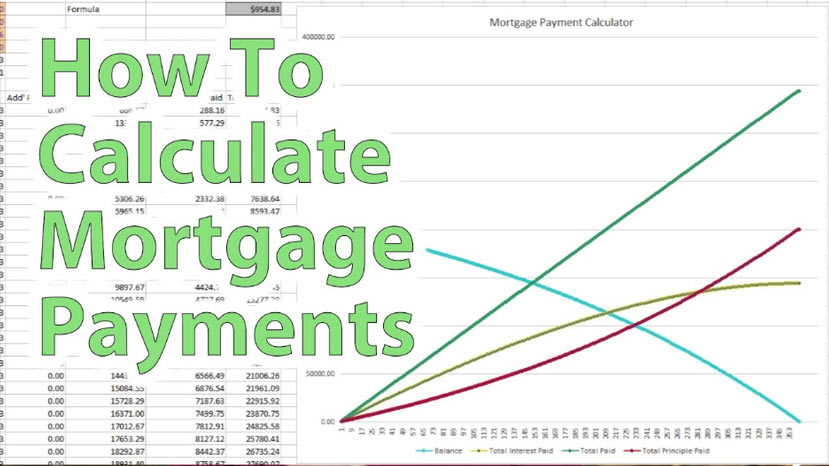How Does a Mortgage Work?
Susan Kelly
Dec 13, 2023
Are you considering taking out a home loan? If so, obtaining and maintaining a mortgage can seem daunting. While it may be intimidating at first, understanding how mortgages work can help to simplify the process significantly.
In this blog post, we'll touch on some of the basics involved in mortgages—including common terminology and typical features—to give you an overview of what to expect if you decide to take out a mortgage. Let's begin by exploring why people take out mortgages in the first place!
Understanding the Basics of a Mortgage
Taking out a mortgage can be intimidating, but understanding how mortgages work is the first step to demystifying the process. Several types of mortgages are available, each with terms and features.
A conventional loan is the most typical type of mortgage and includes any loan that is not secured by government insurance. One type of loan where the interest rate is fixed for the duration of the loan is a fixed-rate mortgage. The interest rate on a variable-rate mortgage fluctuates over time in response to market factors.
When you apply for a mortgage, lenders will typically require you to put down a down payment - this money serves as a financial cushion for the lender and typically ranges between 5-20% of the total loan amount.
Once your application is approved, you'll receive the loan in two parts - principal and interest. The principal is the amount you agreed to borrow with your lender, while interest is an additional fee that must be paid on top of the principal.
It's also important to familiarize yourself with mortgage terms such as amortization and pre-payment penalty. Amortization refers to how long it will take to pay off your entire loan; standard mortgages are usually 30 years long. A pre-payment penalty is a fee some lenders impose if you decide to pay off your loan ahead of schedule.
Learn how mortgage payments are Calculated
One of the most important things to understand when taking out a mortgage is how mortgage payments are calculated. Mortgage payments are comprised of two parts: principal and interest. The principal is the amount you borrow from your lender.
This amount will remain the same throughout your loan's lifespan unless you refinance or take cash out as part of a loan modification. On the other hand, interest is an additional fee that must be paid on top of the principal.
The total amount due each month for your mortgage principal and interest combined is usually determined by applying what’s known as an amortization schedule. This document outlines your future payments throughout your loan's life. It consists of equal payments that will fully amortize your loan by the end of its term.
Your mortgage payment can also be calculated using the following formula: Monthly Payment = (Interest Rate/12) x Loan Balance / 1- (1+ InterestRate/12)-N, where N is the number of payments yet to be made on your loan.
This formula considers both principal and interest when computing your total payment amount. It’s important to note that this formula assumes that you use a fixed-rate mortgage with constant payments throughout your loan. If you use an adjustable-rate mortgage instead, your monthly payment may change in response to market influences.
Explore Different Types of Mortgages and Their Benefits
Mortgages come in various shapes and sizes to fit different types of borrowers. Each type has unique features and benefits, so it’s important to understand the differences before committing to a loan.
A conventional loan is the most typical type of mortgage and includes any loan that is not secured by government insurance. You must typically choose between fixed-rate and adjustable-rate mortgages with this sort of loan, and lenders typically require you to make a down payment of between 2 and 20% of the entire loan amount.
Variable-rate mortgages have an interest rate that changes over time in response to market factors, whereas fixed-rate mortgages have an interest rate that remains constant for the duration of your loan.
Government-insured mortgages are also available, such as FHA loans and VA loans. An FHA loan is a popular choice for first-time homebuyers because it requires just a 3.5% down payment and has flexible credit requirements.
A VA loan is available to veterans or active service members who meet certain criteria; VA loans often come with no down payment requirement and competitive interest rates.
Decide on the Best Mortgage for Your Situation
When considering which type of mortgage to take out, it’s important to research and find the best option for your situation. Start by looking at different types of mortgages, such as conventional or government-insured loans like FHA and VA loans. Consider the benefits of each type of loan concerning your personal financial goals.
Next, consider the down payment you can afford and the interest rate you'll likely receive. Conventional loans typically require a higher down payment than government-insured loans, so be sure to factor that in when making your decision.
Additionally, consider fixed-rate versus adjustable-rate mortgages; with a fixed-rate loan, you'll have peace of mind knowing that your payments won’t change over time.
It's also important to factor in the costs of closing a loan, such as attorney and appraisal fees. Lenders may offer incentives like mortgage points that can lower your interest rate, so it pays to shop around for the best deal.
Finally, don’t forget to consider additional costs like insurance premiums and taxes when calculating your total monthly payment amount.
Know the Steps to Take When Shopping for a Mortgage
When shopping for a mortgage, there are several steps to ensure you get the best possible deal. Start by researching different types of loans and lenders, comparing interest rates, closing costs, and other fees associated with each option.
Next, determine how much house you can afford and research potential neighborhoods you may be interested in buying. It’s also important to check your credit score before applying for any loan to know what interest rate you’ll likely qualify for.
Finally, once you’ve found a lender, it’s time to apply! You'll need to provide supporting documentation such as income statements, bank account records, and tax documents.
FAQs
Q: Why would someone need a mortgage?
A: Homeowners take out mortgages to purchase or refinance their homes, as it can provide access to a large amount of money that is difficult to save. Generally, it is cheaper than other forms of borrowing and offers more flexible repayment options.
By taking out a mortgage, you can pay for your home over an extended period in manageable installments rather than all at once.
Q: What are the key terms used when discussing mortgages?
A: When talking about mortgages, you should know several common terms. The principal is the total sum borrowed from the lender; interest rate refers to the cost associated with borrowing the money; loan-to-value ratio compares the value of the loan to the value of the house; and the repayment term is the length of time it will take to pay off the loan.
Q: What are some typical features associated with mortgages?
A: Mortgages typically come with various features that can be tailored to fit your financial needs. For example, you may select an adjustable or fixed-rate mortgage depending on how much you wish to invest in a long-term commitment.
Fixed-rate mortgages provide security overpayments as they remain static throughout the loan, while adjustable-rate mortgages can offer lower initial payments but expose borrowers to changing interest rates.
Conclusion
Understanding mortgages can make buying or refinancing a home simpler and more manageable. By being aware of key terms, understanding what features are available, and exploring why people take out mortgages in the first place, you can confidently navigate the mortgage market with more knowledge and confidence. If you have any further questions about how mortgages work, don’t hesitate to ask for assistance!







